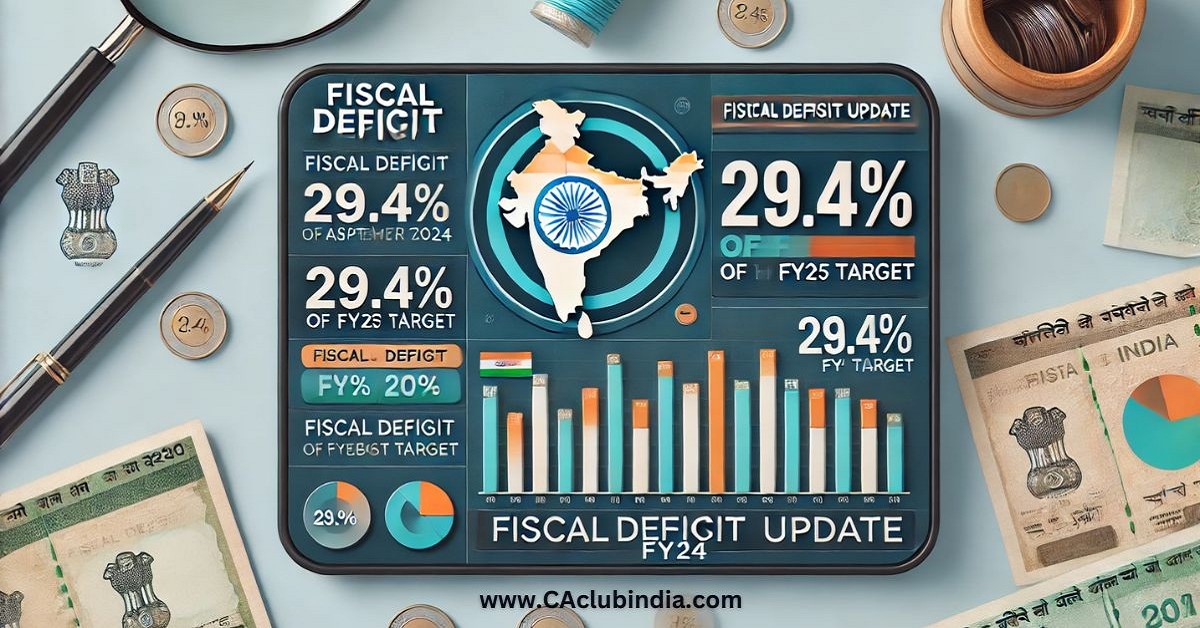India's fiscal deficit for the first half of FY25 (H1FY25) was reported at ₹4.7 trillion, or 29.4% of the full-year Budget Estimate (BE) of ₹16.16 trillion, as per data from the Controller General of Accounts (CGA). This marks an improvement over the 39.3% deficit reached during the same period last year, underscoring the government's focus on fiscal prudence amidst economic pressures.

Key Factors Behind the Deficit Reduction
- RBI's Dividend and Controlled Spending: A significant early-year dividend from the Reserve Bank of India (RBI), coupled with a YoY decrease in capital expenditure, supported the reduction in fiscal deficit. The government's capital expenditure stood at 37% of the ₹11.1 trillion target for FY25, compared to 49% at the same point last year, reflecting a contraction in infrastructure-related spending.
- Tax Revenue Growth: The Centre's gross tax collections showed robust growth, rising by 12% YoY in September 2024, driven by a strong 25% increase in income tax collections. Net tax revenue for H1FY25 reached 49% of the BE, mirroring the achievement of last year's first half. Income tax collections are expected to surpass FY25 targets, barring substantial refunds in the coming months, while corporate tax collections may remain close to or slightly under BE.
- Expenditure Challenges Ahead: Despite the positive fiscal indicators in H1, the government faces a spending challenge in the second half of FY25. To meet the annual capital expenditure goal, monthly spending would need to increase by 52% compared to the previous year. Economists project that meeting the ₹11.1 trillion capex target could be challenging, with a potential shortfall of ₹0.5 trillion.
- Impact of Parliamentary Elections: Delays in capital expenditure during the first quarter, partially due to parliamentary elections, resulted in a July spike that later lost momentum. The government's ability to balance spending without overshooting the fiscal deficit target of 4.9% of GDP will be crucial in the coming months.
Outlook for Fiscal Year 2024-25
With net tax receipts on track and anticipated shortfalls in capital expenditure, economists suggest this may create a buffer for any revenue shortfalls, including those in disinvestment. Meeting the fiscal deficit target will depend on strategic allocation of funds, sustained tax revenue growth, and prudent expenditure in the year's second half.





 CAclubindia
CAclubindia

